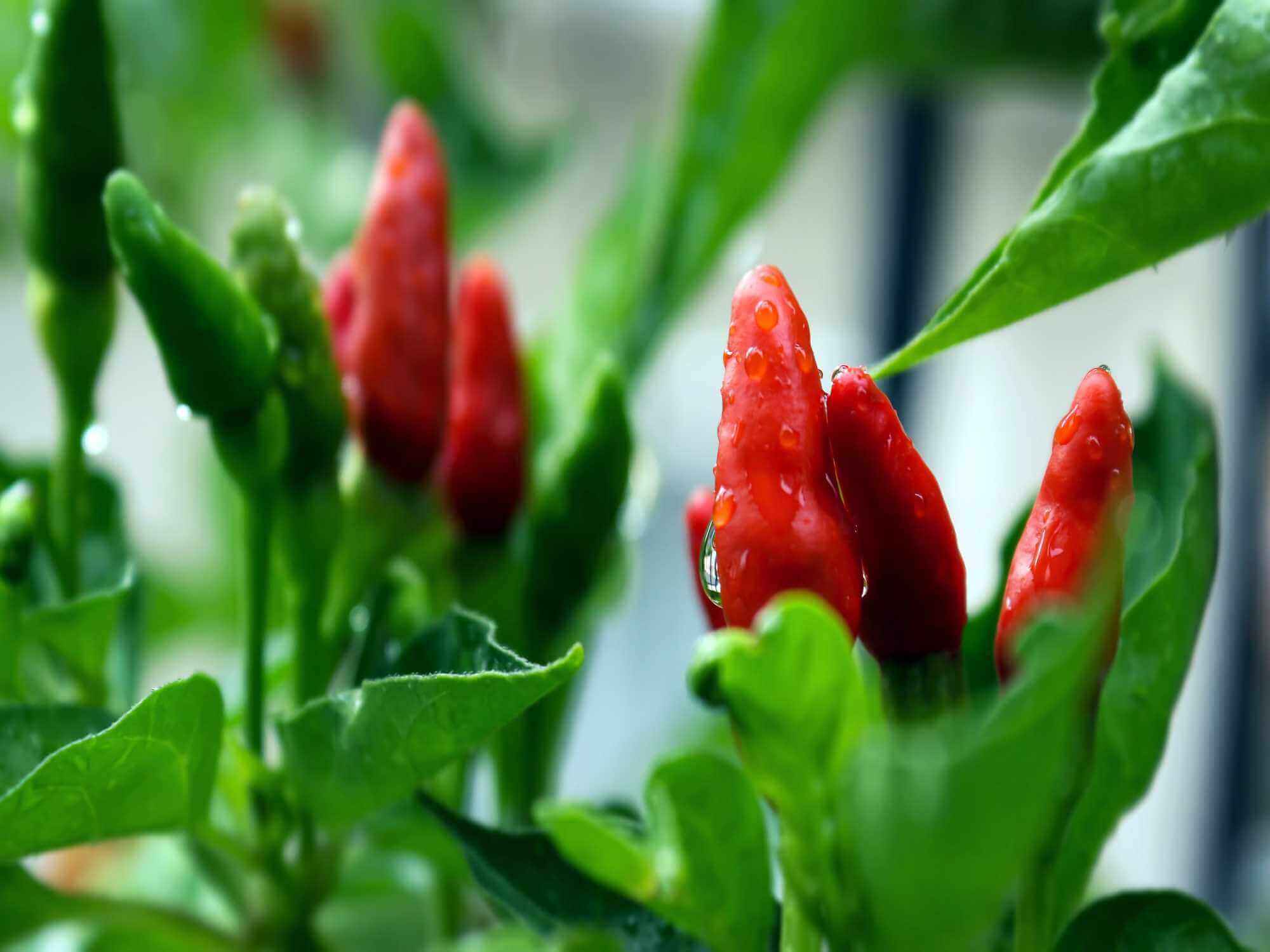Growing your own chilli pepper plants can be very rewarding and one plant can comfortably provide enough chillies for a whole family. Nothing beats having your own home grown chillies to spice up your meals. Chillies are not too hard to grow and by following this complete guide to chilli plants you can guarantee a successful haul of chilli peppers.

Sowing and Germination
The first stage for growing your chilli plants is sowing and germination. You should begin sowing your Chilli plants around January-March. The earlier you plant, the higher yield you will get but you need to ensure that the location of the seed is warm enough for it to germinate (above 21℃).
To plant chilli plants in pots you need to start with a small pot or tray with good drainage. Around 9cm would suffice. Fill with a mix of soil and compost and sow a few seeds on top. A more soil based compost will assist with drainage. This will improve the odds of at least one germinating in each pot. It should be rare that a seed does not germinate but better to be safe than sorry!
Then place these pots either in a propagator or a sunny windowsill. If you want to grow chillies quickly then using a propagator would be recommended for faster germination. Once seedlings appear, move them into slightly larger pots. Moving chilli plants into gradually larger pots is the best way to grow them so have a selection of pots from 9cm to 30cm ready. This will depend on the type of chilli plant as different varieties grow to different heights so make sure to check this before planting.
Early Growing Stages
Now they are in a larger pot, place them in a sunny, sheltered area. Chilli plants require direct sunlight in order to grow a good amount of peppers and should be sheltered from wind which can damage the plant. A greenhouse or polytunnel would be the ideal place.
Once the plant is roughly 30cm tall you should pinch the shoots of the plant. Pinching is a gardening technique where you literally pinch the top of the shoot firmly. This should result in a bushier plant which will result in a higher yield of peppers. By the time it reaches this height it should be in its final pot, ready for fruits to start growing. This will be around May-June depending on when you sowed the chillies and when they germinated.
How to Care for Chilli Plants in Pots
Caring for chilli plants is quite simple if you remember a few key things. The main thing to consider is watering. Chilli plants grow best with an alternating mix of dry and moist soil. You should aim to keep the soil moist but allow it to dry out occasionally. You do not need to water it every day. Waterlogging the soil is the worst thing you could do with your plant so stay on the dry side where possible.
The second most important thing when caring for your plant is fertilising. The best fertiliser to use is tomato fertiliser. Use it in smaller concentrations than you would for tomatoes and apply it when fruit begins to appear.

How to Harvest Chilli Peppers from Chilli Plants
The peppers on your chilli plant should be ready around the end of summer. You have options on when to pick the peppers depending on the heat you are looking for. Harvest when they are green for a milder pepper and a larger yield or wait until they are ripe if you are a spice lover looking for a hotter pepper. Ripe peppers can be green, yellow, orange or red depending on the species. To harvest them simply remove them from the plant with a sharp knife or scissors.
Can you Leave Chilli Plants Outside in Winter?
Over Winter, you will want to bring chilli plants indoors to protect them from the cold. Ideally, place them in a windowsill and continue to water so it does not dry out. If looked after correctly a chilli plant can live between 1.5 – 15 years depending on which species of chilli you are growing and keeping it inside over the winter will definitely help.
Common Issues with Chilli Plants
The most common issues when growing and caring for chilli plants are aphids, whitefly and grey mould. Aphids and whitefly are both common bugs that can damage the plant. Use insecticide to deal with these pests. Find out more about how to get rid of greenfly here. Grey mould occurs when there is too much dampness in the air and can often be the result of overwatering. It will appear as a a fuzzy grey, brown mould usually around damaged parts of the plant. It can cause leaves to shrivel and when identified should be removed as quickly as possible in order to protect the healthy parts of the plants.